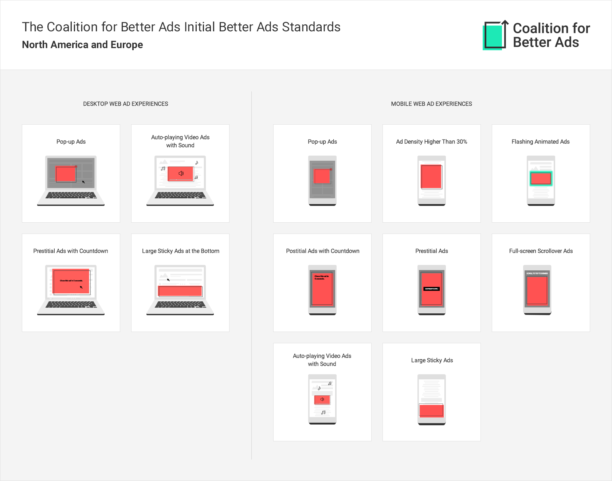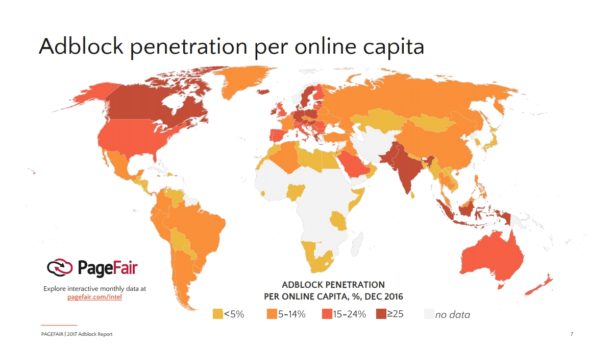Google deploys this Thursday its “advertising filter” on Chrome. Objective: to provide users of the most popular browser on the market a more fluid experience. Intrusive ads will automatically be blocked after 30 days on publishers’ websites that are not in compliance.
It summarizes the formats involved, the reasons for this novelty, the impact for publishers and what to do if intrusive ads are found on its site.
Which ads are affected?
Let’s start with the most important: the ad formats affected by the Google Chrome ad filter. We will then see how they were chosen. Google has decided to punish 4 desktop formats and 8 mobile formats.
Advertising formats blocked on desktop and mobile
Here are the ads that will be blocked by Google Chrome on desktop and mobile:
- The pop-ups
- Autoplay videos with sound
- Sticky ads, at the bottom of the screen, if they are too high
- Interstitials with a countdown displayed before the content ( prestitial )
Note that on mobile, the interstitials displayed before the content will be blocked in all cases (whether a countdown before closing is imposed or not). Also note that the maximum size of sticky ads should be equivalent to 30% of the screen, according to information from the dedicated site, Coalition for Better Ads .
Advertising formats blocked only on mobile
Google also blocks the following formats, but only on mobile:
- Advertisements visible on more than 30% of the screen
- Animated ads, “who are flashing”
- Interstitials with a countdown displayed after the content (postitial)
- “Full screen” ads displayed during the scroll
All these advertising formats are presented in this infographic. You can check this Coalition for Better Ads page for more details on the formats affected by Google Chrome blocking ads.

Why Google blocks these ads on Chrome?
Google puts forward several facts to justify its decision:
- Google Chrome users can comment on their browsing experience: 20% is about unwanted advertising.
- In 2017, the “Mute This Ad” feature has been used 5 billion times
- Adblocking rates are high, especially in Europe
In France, 11% of Internet users block ads on their browser (mostly on desktop, unlike the Asian Internet users who block mobile ads especially). The map below shows the adblocking in the world ( source: PageFair , February 2017).

Google recalls that when a person uses an ad blocker, he blocks ads from all sites – “even those with good advertising experiences. Advertising blocking is a concern for the Web and [Google tries to address the problem before installing an ad blocker .
Google has partnered with several large companies in the sector , within the Coalition for Better Ads: AppNexus, Criteo, Facebook, IAB, Microsoft …
A study was conducted among 25,000 Internet users to list “overly” intrusive advertising formats. The 12 formats above have been determined.
Is my website concerned?
Google allows webmasters to know if their website is affected, via the Ad Experience Report , accessible from the Search Console’s “Web Tools”.
Website publishers can analyze the desktop and mobile experience of their website to see if they’re embedding ads banned by Google Chrome. You can display examples to identify the relevant advertisements.
When Google spots these ads, you have 30 days to comply (before the ad filter is applied to your site).
What is the impact of this measure?
Google provides some data to measure the impact of this measure:
- Less than 1% of the sites are concerned. “Out of 100,000 websites evaluated in North America, less than 1% have received a simple warning or are failing and will see their ads filtered if they do not fix the problem . “
- In 8 months, 37% of non-compliant sites became compliant. The Advertising Experience report has been available since early June 2017. “37% of sites that did not comply by this date are now”.
- The standards only apply to North America and Europe , as the preliminary survey of 25,000 Internet users was conducted in these markets. “The Chrome Ads filter will apply to sites where most of the traffic comes from one of these two zones.”